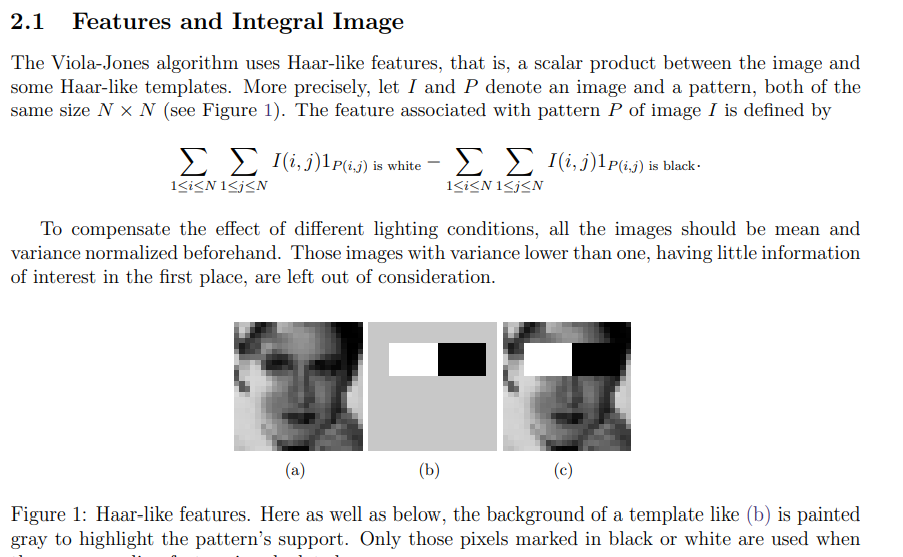In this article, we decipher the Viola-Jones algorithm, the _rst ever real-time face detection system. There are three ingredients working in concert to enable a fast and accurate detection: the integral image for feature computation, Adaboost for feature selection and an attentional cascade for e_cient computational resource allocation. Here we propose a complete algorithmic description, a learning code and a learned face detector that can be applied to any color image. Since the Viola-Jones algorithm typically gives multiple detections, a post-processing step is also proposed to reduce detection redundancy using a robustness argument.
A face detector has to tell whether an image of arbitrary size contains a human face and if so, where it is. One natural framework for considering this problem is that of binary classification, in which a classifier is constructed to minimize the misclassification risk. Since no objective distribution can describe the actual prior probability for a given image to have a face, the algorithm must minimize both the false negative and false positive rates in order to achieve an acceptable performance. This task requires an accurate numerical description of what sets human faces apart from other objects. It turns out that these characteristics can be extracted with a remarkable committee learning algorithm called Adaboost, which relies on a committee of weak classifiers to form a strong one through a voting mechanism. A classifier is weak if, in general, it cannot meet a predefined classification target in error terms. An operational algorithm must also work with a reasonable computational budget. Techniques such as integral image and attentional cascade make the Viola-Jones algorithm [10] highly efficient: fed with a real time image sequence generated from a standard webcam, it performs well on a standard PC.
Algorithm To study the algorithm in detail, we start with the image features for the classification task.


.svg)
